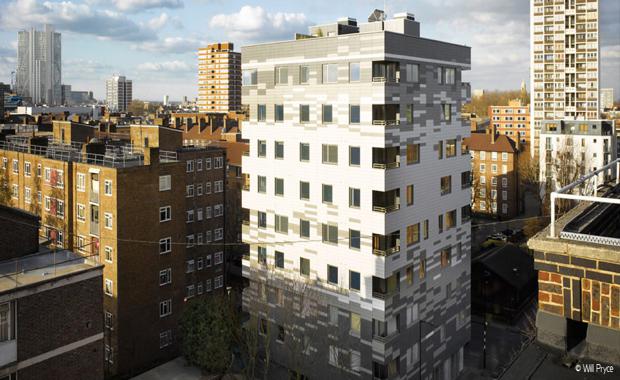Are We Entering The Age Of Timber?
Timber towers may be the secret to more sustainable buildings, safer construction sites and liveable, breathable cities, says UK architect Andrew Waugh.
Mr Waugh is currently getting ready to join a panel of speakers, including Michael Rose AM, Chairman of The Committee for Sydney, Joe Snell, Director of Snell Architects, and Mark Steinert, CEO and Managing Director of Stockland, at
Green Cities 2017 as they unpack the success factors in density done well.
In preparation for the panel, Mr Waugh said we are entering the age of timber.
His opinion draws heavily from his first experience with timber construction, when his firm Waugh Thistleton built the nine-storey Stadthaus in Hackney – a building now considered the world’s pioneer timber residential tower.
The 29-apartment complex was constructed from cross-laminated timber (CLT) panels. Load-bearing walls, floor slabs, star and lift cores were all made entirely from timber.

Stadthaus in HackneySince Stadthaus, Waugh said builders, like his own team, are “beginning to understand the architecture of this new material” and to understand the opportunities that timber presents.
“The material is very strong and very light – and we can utilise the walls as beams and carry loads across the building, for example.
“It’s a far safer construction method, as timber is a non-toxic material. There are no fumes or dust, no heavy power tools working. It offers a much better working environment,” Mr Waugh said.
He said timber buildings also provide great thermal performance and acoustic separation, and are fast and quiet to construct. They may also be the secret to increasing the density of our urban fabric without detracting from liveability.
“Mid-rise timber towers are the perfect buildings to construct in the middle of a city," he said.
Mr Waugh current focus is on using CLT in modular housing. He said his team is taking “more and more construction off the building site and into factory conditions, but not at the expense of design or quality, which it has been previously. That’s really exciting.”
"Ultimately, the environmental benefits should always be the 'headline'.
“We are building with a carbon store, and with a material that doesn’t push more carbon into the atmosphere. That’s the imperative.
“In terms of architecture and construction, an environmentally-aware solution is always the most affordable solution in the long term. Regardless of whether the dollars and cents add up now, they shortly will.”
Images courtesy Waugh Thistleton Architects














